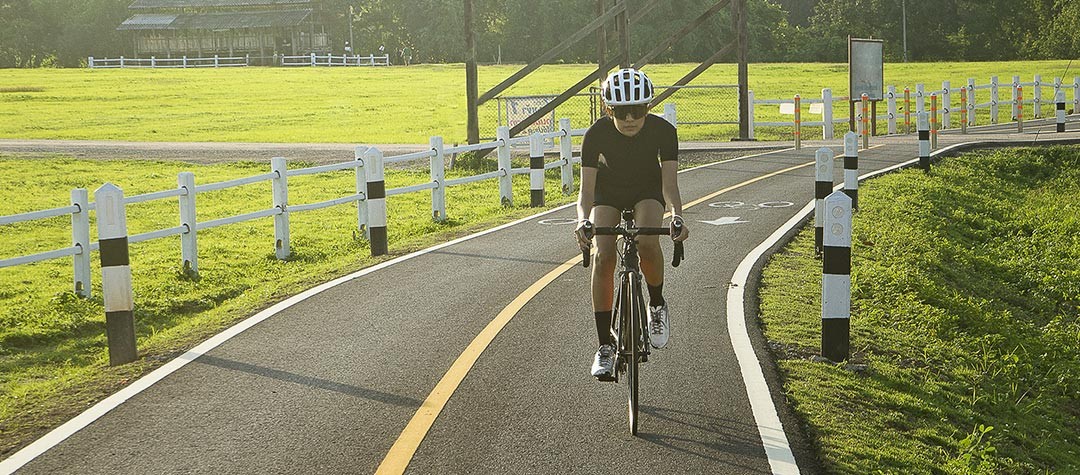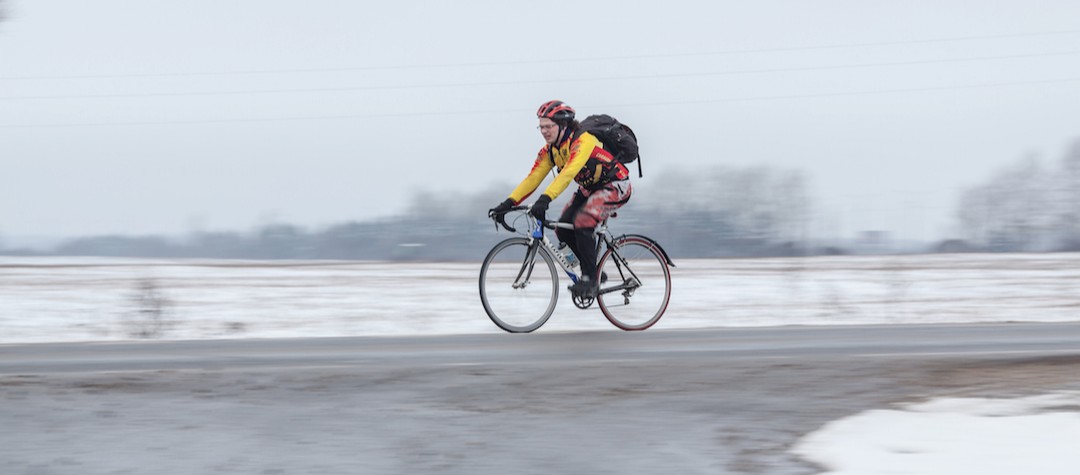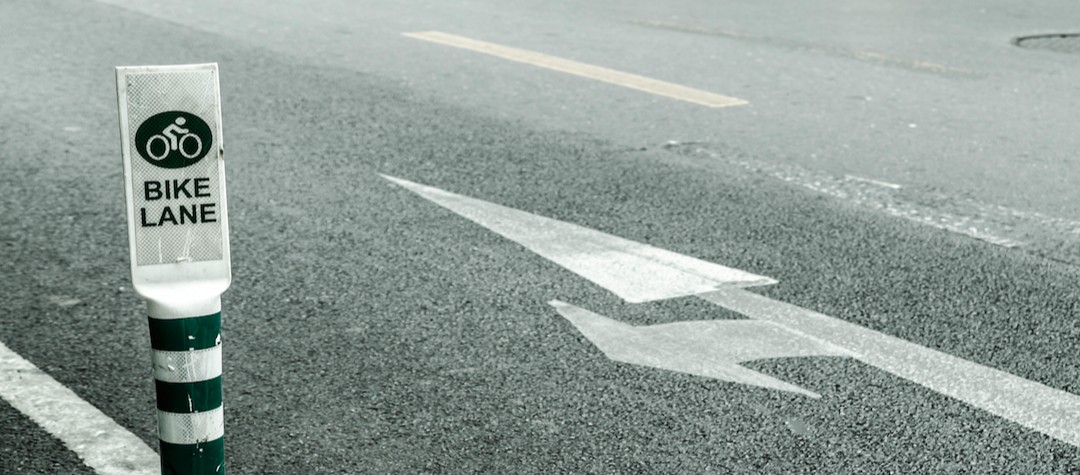Road biking can be highly dangerous when the roads are wet. Wet weather radically alters the conditions for the rider, meaning the techniques employed in dry conditions have to be adjusted accordingly.
Not only does wet weather potentially lead to a soggy and uncomfortable cycle ride, there is also a significant effect on a bike’s tyres, brakes and also on a cyclist’s cornering ability and visibility. Here’s a guide on how to be prepared for and able to deal with wet weather riding.
Bicycle tyres/tires
Rain affects the grip of tyres on the road meaning that it is necessary to reduce speeds. It’s worth considering your choice of tyres to suit the conditions and the seasons. For example, some riders will have a more than one set of tyres, with heavier tyres with greater grip being used in the wetter months and the lighter more slick tyres being used in drier months.
In fact some riders go one step further and will have more than one bike, often with a winter/commuter bike setup with grippier tyres, and then a race bike with faster tyres for the better drier conditions. If your budget won’t stretch to more than one set of tyres, then good all-round tyres that work well year round are worth buying.
Bike brakes
It’s a fact, wet brake pads are less effective in slowing your bike. To keep the brakes in a condition where they will produce some braking even when wet, it is best to plan ahead and brake early. The pads rubbing against the wheel rims wipes away the water so they can respond when pressed, but most rims will require a full revolution before the brake pads clear the water from the braking surface and begin stopping.
An alternative to regular caliper brakes is disc brakes (more commonly found on mountain bikes), which are far more effective in the wet...
Remember that brake pads will wear out far quicker due to the mix of road grit and water than in summer months so be sure to check them over frequently. An alternative to regular caliper brakes is disc brakes (more commonly found on mountain bikes), which are far more effective in the wet, and more and more road bikes (and even some pro road racing teams) are starting to employ disc brakes, thus improving braking safety in the wet.
Cornering in the wet
When cornering, it is best to keep the cycle more upright than in dry conditions. Lean the body more into the turn than the bicycle itself, essentially shifting as much of your weight on the outside pedal as possible.
By doing this, you will be able to corner with a reasonable amount of speed, as the body will tend to remain balanced over the bike even when the tyres pass over surface hazards such as painted lines. Remember to adjust your speed accordingly; you won’t be able to take a corner in the wet at the same speed that you normally would.
Remember to adjust your speed accordingly; you won’t be able to take a corner in the wet at the same speed that you normally would.
Cycling visibility
In heavy rain, visibility can be poor, with water running into the eyes and spray coming up from other vehicles or cyclists. Glasses with clear or yellow lenses can help produce the best visibility in heavy rain, but not if they are covered in spray and rain!
To counter this problem, wear a waterproof cycling cap placed under your helmet to help shield your glasses. If the rain causes problems with the lenses steaming up then you could use an anti-fog product to prevent further problems. Also it is best to make yourself visible to others with a brightly coloured rain jacket and lights on your seatpost and handlebar.
Puddles, pot-holes and patches
The road surface will be at its most dangerous just after the rain has begun. During this early rain oil buildup will start to rise to the surface, causing the road surface to become hazardous. Spot these oil slick patches by looking for rainbow-edged patches on the road.
Also, be extra careful to avoid going directly over metal surfaces such as drainage grids, manhole covers, cattle grids, painted lines on the road, as they all become very hazardous when wet. At the same time, avoid puddles as you don’t know what it lurking beneath. We’ve all seen the youtube disasters of the unsuspecting cyclist who enters a puddle only to find what lurks beneath is a hidden construction hole.
Cycling in a group in wet conditions
When riding with others, it is best not to ride directly behind the rider in front as this throws up spray and grit, even if they have mudguards. Also, stopping distances will be affected in the wet so it is best to keep a safe distance apart to avoid collisions.
If you are planning for riding for any length of time in the wet then attach some mudguards (fenders).
To avoid annoying all those in the group, if you are planning for riding for any length of time in the wet then attach some mudguards (fenders). For ease, you can get ones that, although they are quite as effective as full mudguards, are quick-release and attach to the seat post. Remember, the rider turning up on a rainy-day group ride without mudguards is destined to ride at the back of the pack. Not only will a mudguard keep your fellow riders happy, it will also help keep your feet, legs and behind drier.
Dress for the conditions
Riding is the wet is little fun if you are soaked through after the first few minutes. It really is worth the investment in some decent cycling specific wet weather gear to make your riding as comfortable as possible. A lightweight and breathable waterproof jacket, ideally with a dropped tail at the back, will keep you dry in almost all the worst of conditions.
Make sure any layers you wear have wicking qualities to draw away sweat and that they are breathable so that you don’t ‘boil in the bag’ and arrive wet from the inside out. Wear waterproof socks and cover your shoes with overshoes to insulate them, or find some waterproof boots (such as Gore-Tex ones) which prevent the need for overshoes. Full fingered water-proof and wind-resistant gloves will also prevent your hands getting cold.
Chain lube
In wet conditions your bike will take a bit of a hammering and nowhere more so than the chain. Grime from the road will end up in your chain and mechanism, and if left for too many day after a ride it will quickly start to rust. Clean and thoroughly dry your chain after a ride before lubricating to increase it’s longevity.
Ideally, use a heavier ‘wet lube’ to lubricate your chain so that all the lubricant doesn’t wash away in the wet. A heavier lube will attract more dirt and grime which will require you to clean and lube your chain more frequently, but the effort will be worth it when the alternative is a worn or rusting chain which then quickly wears out other moving parts on your trusty steed.
Get a rain bike
Some people deal with wet weather by not riding at all, but that is the coward’s way out. Others opt to have a dedicated rain bike or winter bike which they will use when conditions are not expected to be pleasant. This rain bike will usually have tyres with better grip in the wet, plus mudguards kept on permanently so you don’t have to keep taking them on-off dependant on conditions.
Often people will relegate the first road bike they bought to the status of ‘rain bike’ when they buy a new upgraded cycle. This way you can ride on in the rain and be comfortable you are not trashing your new pride and joy, which you can keep on standby for important events and summer riding.
Picture credit: Vereshchagin Dmitry / Shutterstock.com














